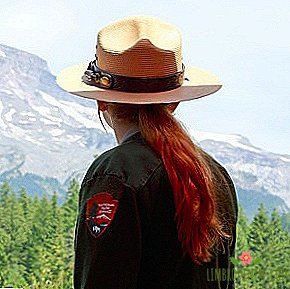"Ball of innocence": Daughters take a vow of allegiance to fathers
EVERY DAY PHOTOGRAPHERS AROUND THE WORLD looking for new ways to tell stories or to capture what we previously did not notice. We choose interesting photo projects and ask their authors what they wanted to say. This week is the series “The Ball of Innocence” by the Swedish photographer David Mangusson, a graduate of Fridhems Folkhögskola and the Scandinavian School of Photography. From childhood, David was fond of filming: he often spent time in the photo development room, at the age of four he became the owner of an Instamatic camera, and at nine, like everyone else, he got a Polaroid. In this series, he spoke about the participants in the "balls of chastity" - young American women by their fathers, who swore to each other to be an example of chastity.
The "Ball of Purity" is a ceremony where young girls promise to "live the immaculate life before the Lord" and remain virgins until marriage. In turn, their fathers sign a pledge, promising to protect the chastity of their daughters. Sometimes they exchange rings as symbols of their vows. The ceremony depends on the organizers, but most of them are held in hotels or banquet halls. The evening begins with a formal dinner with speakers who share their thoughts about the ball. After that, the fathers sign a contract, promising to protect her daughter on her immaculate path, and also to be an example of her for purity. In Louisiana, a 12–13 year old girl gives a vow of purity. At a ceremony in Colorado Springs, where girls are even younger, daughters testify in front of their fathers, and if they choose this path, they can take a white rose and put it on the stage, where they again make their promises to God, themselves, their family and friend to a friend. According to statistics from the Christian Abstinence Information Service, “challahs’ balls ”were held in 48 US states. After I got the idea of shooting, I began to get involved with the organizers of the balls in all states. The whole process took four or five months - from the moment of sending letters and phone calls to contacting someone who was ready to help me contact the girls and their fathers participating in the ceremony. I photographed and interviewed heroes at balls in Louisiana, Colorado and Arizona.
When I first heard about the “balls of innocence”, I imagined angry fathers who were mortally afraid of anything that could damage their daughters or their honor. Over time, it became obvious that these fathers, like all parents, only wanted the best for their children — to protect those they love, using the path they knew best. In many cases, the girls themselves took the initiative to participate in the ball - they made decisions based on their own convictions and their faith, and many of their fathers did not even know what the “Ball of Purity” was until they were invited by their daughters. The more I learned, the more I was surprised at my first reaction and how harsh I was in condemning people I had no idea about.
During filming, I asked the girls and their fathers not to smile - I wanted to show the seriousness of the obligations they gave to each other. In all other respects, they had complete freedom of action: I said that they could stand as close to each other or as far from each other as they wanted, that they could hold hands, pray, close their eyes, or look directly at the camera. Each photo session lasted about an hour, and later, when sorting out the photos, I realized that these girls and their fathers stood and held each other for an hour, focusing only on their relationships and their decisions. Some photographs show very strong girls, fathers are almost afraid to embrace them. I couldn’t even direct it if I wanted to. I myself have never stood, hugging another person for a whole hour. The main thing is that I did not interfere in the process of their interaction with each other - I wanted that the way they cling to each other was something unique, a history of their relations. If you control it, you can interfere with someone’s very personal story and spoil it.
This project shed light on my own bias towards the participants in the ceremonies. Therefore, I did not want to provide answers, but to concentrate on asking questions about faith, culture, sexuality, differences and similarities. Especially I wanted to show how our worldviews are shaped by the culture in which we grow and the values that it gives us. I have more questions after this series, of course, than answers, and I very much hope that this says something about our own ideas and prejudices towards other cultures.










www.davidmagnusson.com




